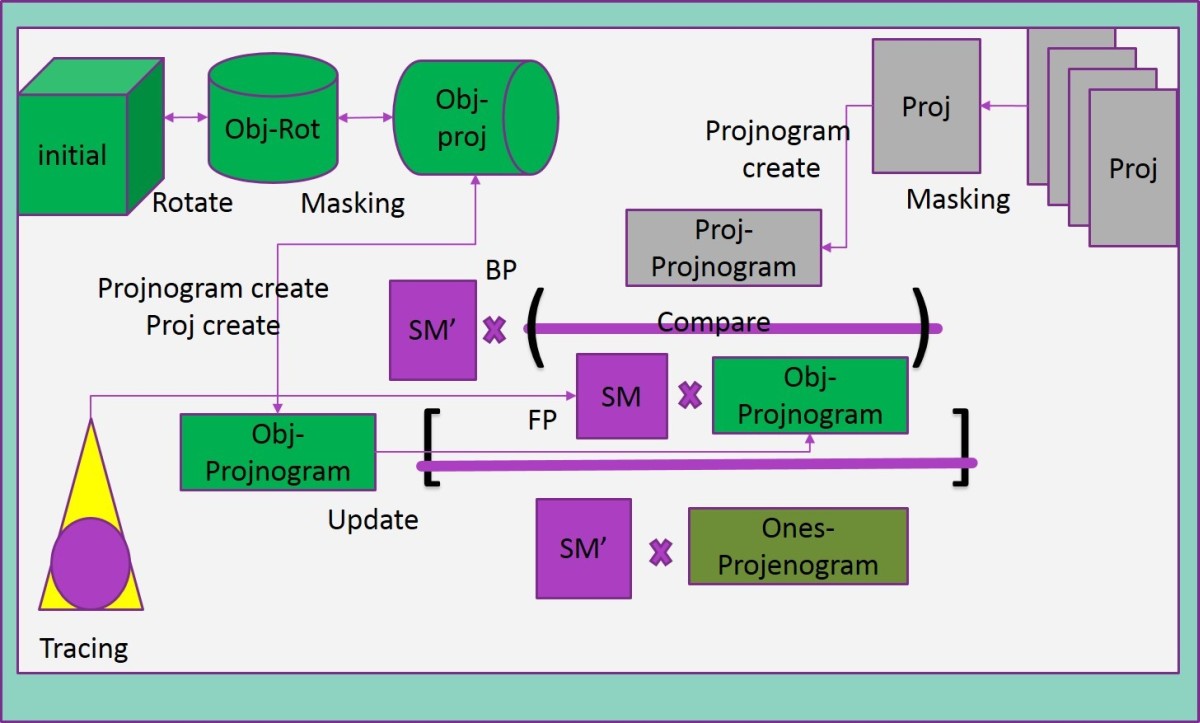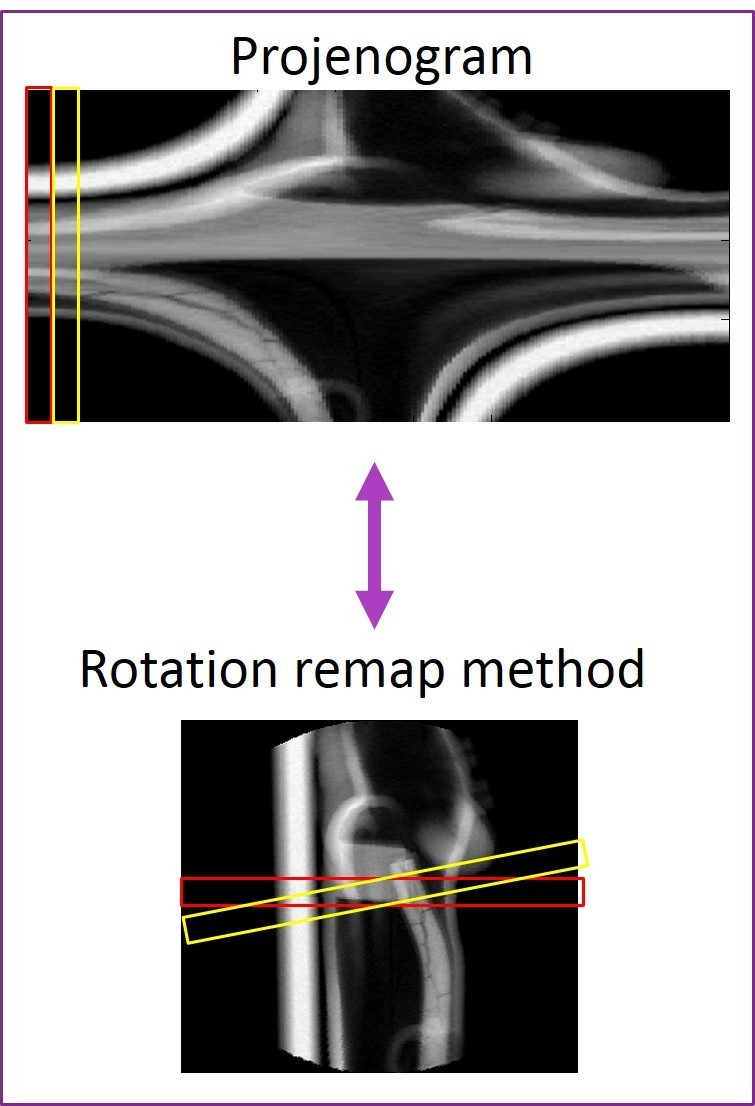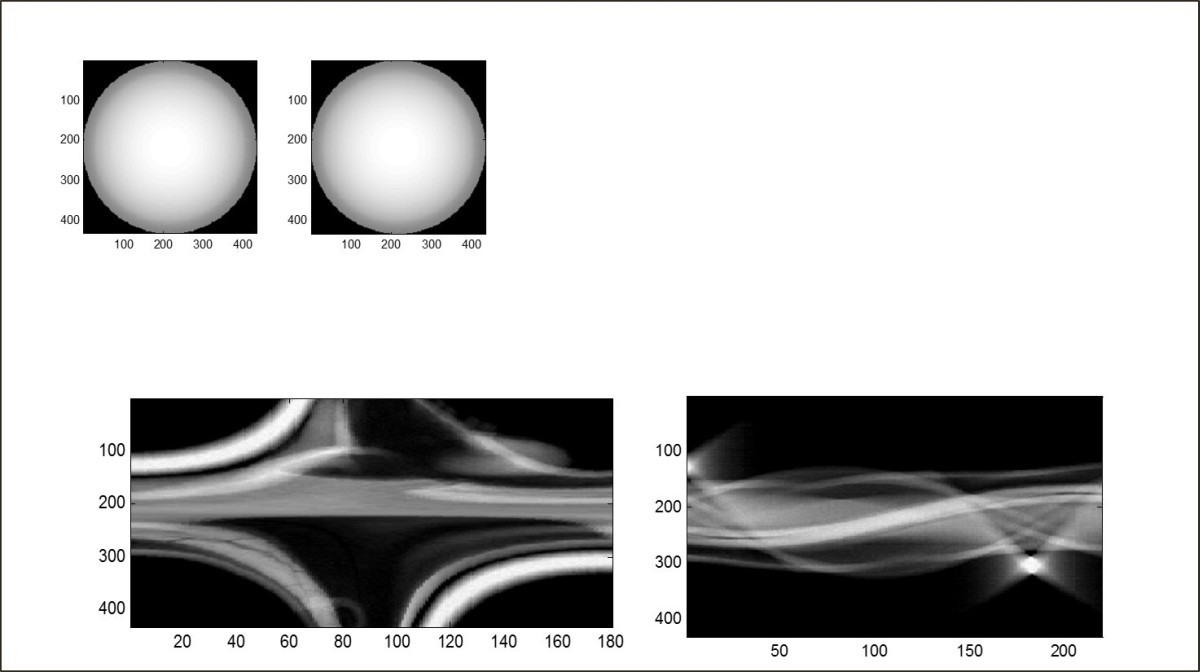| Summary |
In order to achieve the above purpose, the present invention provides a computerized tomography imaging reconstruction method comprising the steps of:
Step 1: Gather information - collecting all the different directions corresponding to a projection of the data by using the object as a center when an image system goes around an object every predetermined angle, and the data are recorded as geometric parameters of the imaging projection system; then the directions of the geometric parameters of the system are created as a set of three-dimensional spatial imaging reconstruction information.
Step 2: Projection - building the imaging virtual data model and simplify its three-dimensional characteristics into a simplified data model, and virtualize a set of data on the area of interest as a forecast data, and finally input the data of interest into the simplified data model to simulate the projection.
Step 3: Comparison - comparing and matching the simulation projection with the collected information at each angle of the projected image, and calculating a difference value.
Step 4: Back-projection - processing iterative calculation of back-projection by the different value.
Step 5: Correction - correcting the original three-dimensional imaging spatial reconstruction information by the difference between the value of the back-projection.
Step 6: Cycle - verifying the difference whether is less than a predetermined difference value to decide to go around the steps or not. If not, then go back to the projection step; and if so, then go for the next set of three-dimensional spatial imaging reconstruction starting with the steps of projection, comparison, backprojection and correction in sequence, until each direction of the three-dimensional spatial reconstruction image completes the cycle, and the data of three-dimensional imaging reconstruction space is smaller than that of the predetermined value in the previous iteration.
Step 7: Image output - outputting the reconstruction image from all directions of the resulting simulated projection data forms a three-dimensional imaging. |







